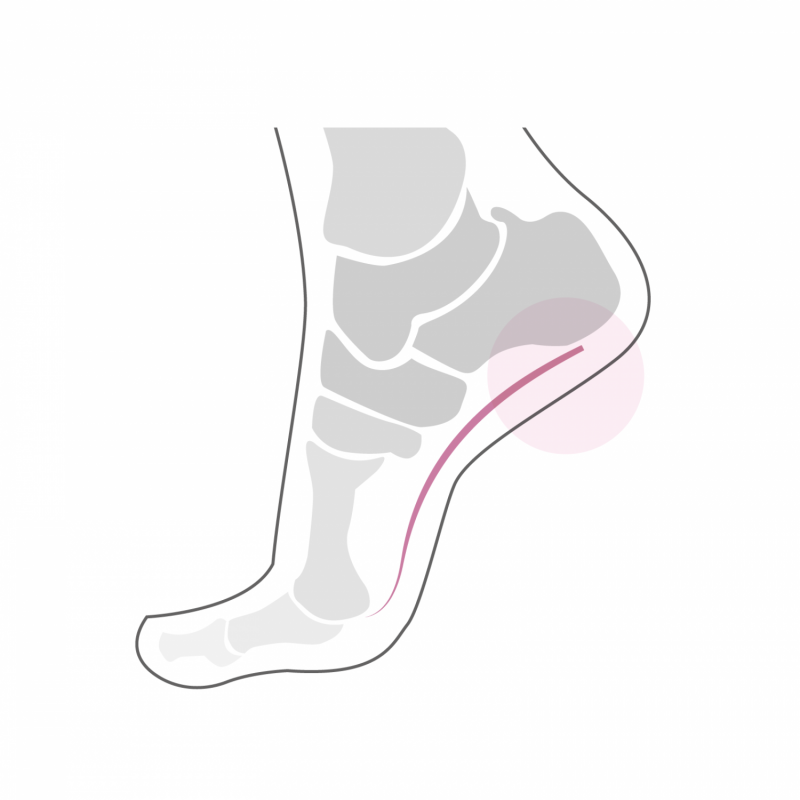Plantar Fasciitis

Plantar fasciitis is an inflammatory reaction located at the insertion of the plantar fascia on the calcaneus. These are actually micro-lesions that can develop when the fascia or plantar fascia is inserted, a fibrous structure extending from the calcaneus to the base of the toes. The causes of this inflammation are multiple but are often associated with an overload of this area. This overload can occur during a rapid increase in certain activities or during significant weight gain over a short period. Morphological factors such as a shortening of the gastrocnemius, a very pronounced hollow foot or a decompensated flat foot can also favor the appearance of plantar fasciitis. Pain due to overload and inflammation is first present with prolonged exertion but settles quickly at rest and is especially felt when resuming walking in the morning or after a long sitting position.
Treatment
The diagnosis is made by the patient's history (concept of overload) and by clinical examination. A radiological examination helps to better define the morphology of the calcaneus and the presence or absence of a heel spur. It should however be known that plantar fasciitis can develop in the absence of anatomical modification of the calcaneus and that there is no direct relationship with the calcaneal spine. An MRI scan is often necessary to determine if the inflammation is limited to the plantar fascia or if it also affects the plantar part of the calcaneus.
The treatment of plantar fasciitis must remain conservative. As this is most often an overload of the insertion area, the aim of treatment will be to reduce the loads so that the inflammation can subside. The first step is to save your foot. The use of crutches is not necessary, but it will be necessary to reduce the sporting activity triggering the pains by opting either for rest, or for a less traumatic compensation activity. We will associate a classic anti-inflammatory treatment in the form of physiotherapy (ultrasound, iontophoresis, deep transverse massages). In the event of an associated deformation of the flat foot or hollow foot type, which is particularly developed, the adaptation of a plantar support may also be beneficial in order to obtain a better distribution of the loads at the level of the arch of the foot. A special MBT® or Kyboot® type shoe intended to unload the area can also be used as treatment. This shoe will allow you to continue walking normally, while strengthening and stretching your muscles. Regular stretching exercises for the calf and thigh muscles is also an important part of the treatment. This makes it possible to limit the tension exerted by a shortening of the gastrocnemius on the plantar fascia. In case of particularly intense pain in the morning at start-up, wearing a night splint keeping the ankle in a neutral position also has a beneficial effect. Treating plantar fasciitis can be painful and time-consuming. In principle, the combination of these different therapeutic measures (reduction or adaptation of loads, physiotherapy, suitable shoes, stretching exercises) will help on the one hand to reduce the inflammation and on the other hand to prevent it from recurring. The course is quite long, however, and it is not uncommon to have up to six months of treatment. If these conventional measures fail, local cortisone infiltration can be used, which will often lead to permanent healing. As this is a particularly exposed anatomical area it will be best to avoid any surgical gesture which can cause scar tissue which will remain in most cases very painful and resistant to any treatment.
